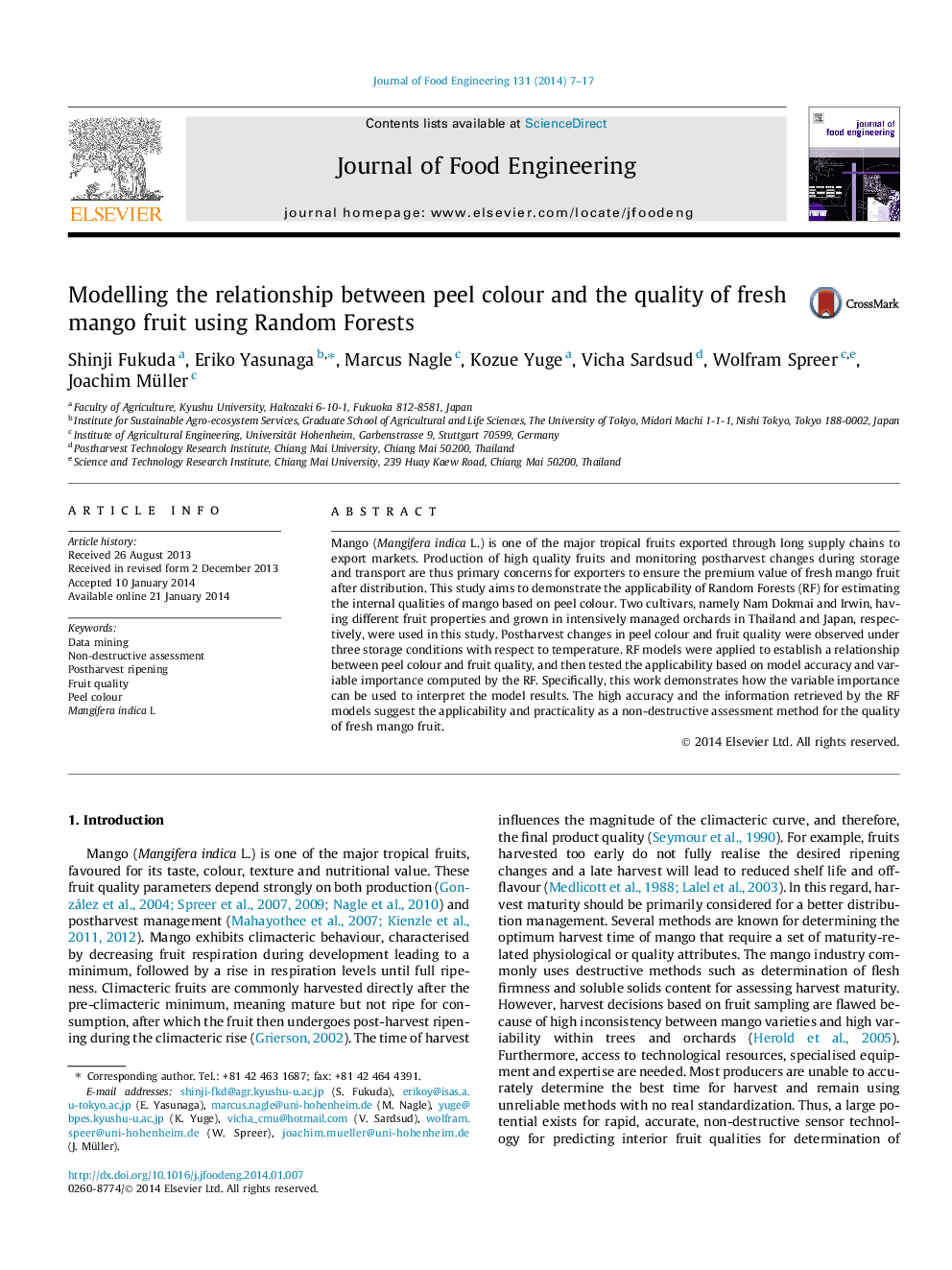| Article ID | Journal | Published Year | Pages | File Type |
|---|---|---|---|---|
| 6665831 | Journal of Food Engineering | 2014 | 11 Pages |
Abstract
Mango (Mangifera indica L.) is one of the major tropical fruits exported through long supply chains to export markets. Production of high quality fruits and monitoring postharvest changes during storage and transport are thus primary concerns for exporters to ensure the premium value of fresh mango fruit after distribution. This study aims to demonstrate the applicability of Random Forests (RF) for estimating the internal qualities of mango based on peel colour. Two cultivars, namely Nam Dokmai and Irwin, having different fruit properties and grown in intensively managed orchards in Thailand and Japan, respectively, were used in this study. Postharvest changes in peel colour and fruit quality were observed under three storage conditions with respect to temperature. RF models were applied to establish a relationship between peel colour and fruit quality, and then tested the applicability based on model accuracy and variable importance computed by the RF. Specifically, this work demonstrates how the variable importance can be used to interpret the model results. The high accuracy and the information retrieved by the RF models suggest the applicability and practicality as a non-destructive assessment method for the quality of fresh mango fruit.
Related Topics
Physical Sciences and Engineering
Chemical Engineering
Chemical Engineering (General)
Authors
Shinji Fukuda, Eriko Yasunaga, Marcus Nagle, Kozue Yuge, Vicha Sardsud, Wolfram Spreer, Joachim Müller,
